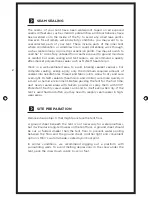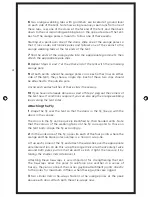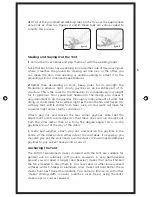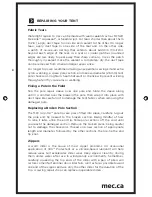
3
SET-UP
A note about shock-corded poles
Shockcord (bungee cord) is meant to keep pole sections in the proper
order—not as an automatic assembly mechanism for poles. Do not hold
one section while whipping the rest of the pole back and forth, or toss
the poles into the air; either procedure excessively stresses the pole joints
and shockcord. Instead, fi t poles together section by section, making sure
that each piece slides completely into the next. Forcing an improperly
assembled pole into place can damage the pole and/or the tent body
and fl y.
Assembling the Tent
1
Assemble all poles carefully as described in the previous paragraph.
You will have two straight black poles and two crooked orange poles.
2
Lay the tent body out fl at.
In windy conditions, peg all the fl oor corners
before proceeding.
3
Lay the two black poles on top of the tent body so that each one crosses
diagonally from one corner to the opposite corner; the two poles should
cross in the centre to form an “X.”
4
The pole clips are attached to the canopy with “ribbon” that is colour-
coded to match the poles: black-ribboned clips go onto the black poles;
orange-ribboned clips go onto the orange poles. Each pole also follows a
single canopy seam from end to end.
Clip the black-ribboned clips to the two crossed poles. The clip at the top
of the tent should be attached to the outside (uppermost) pole.
5
Carefully fi t the pole ends into the grommets on the black webbing
tabs at the four corners of the tent.
It may help to have one person lifting the top of the tent to loft it up as
you tension these two poles. Be especially careful in windy conditions:
this is the stage when the greatest stress can be placed on the poles.
There is more than one grommet on each webbing tab so that you can
increase or decrease the tautness of the tent to compensate for fabric
slackening or tightening caused by changes in humidity. When fi rst
erecting the tent it is best to use the outermost (loosest) grommet
on each tab.
Monadnok eng.indd 3
Monadnok eng.indd 3
3/1/05 2:31:12 PM
3/1/05 2:31:12 PM


























